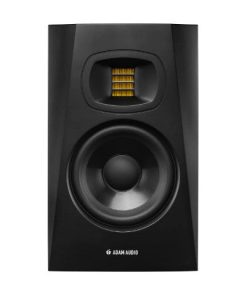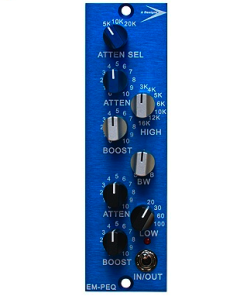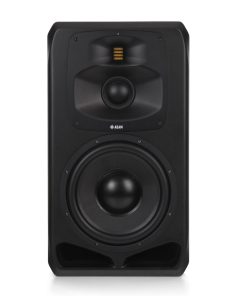IK Multimedia EQ P60G Plug-In IK Multimedia
$ 124,99 $ 50,00
Classic American 10-Band Graphic EQ-Preamp
This EQ was originally designed as a variation to the standard three and four band console EQs. It bears the same all discrete signal path and proportional Q design of the EQ PA and EQ PB modules but uses a ten band graphic approach instead of the semi-parametric three and four band design of the other modules.
This results in several differences, but still a killer sound.
The core circuitry that this module was based on is still the custom op amp like its parametric brothers. So the same sonic character is retained here, but the graphic approach makes it quick and easy to dial in a particular shape, which is clearly shown by the ten vertical sliders.
This module is handy when you need to make EQ adjustments on larger parts of the spectrum instead of a restricted area. Boosting or cutting several bands at once will radically alter the sound of a track, be it a thin, weak snare that needs low end or a dull vocal that needs to be opened up.
This module is a great complement to the EQ PA and EQ PB parametric modules.
Modeling with extreme accuracy all of the signal path and the high headroom allowed by the custom op-amp and the output transformer of the original hardware made possible to maintain all of the analog character and subtle harmonic distortion that makes this modules so “beefy”. Such feature is the key to its big and bold “American sound” that is clearly recognizable in hundreds of A-list mix productions.
On top of this, the reciprocal nature of the EQ PG’s bands, and its fixed frequencies, easily allows it to “undo” a boost or cut operation on an already processed file.
In addition, the EQ PG is loaded with the same preamp circuit as the two other EQ models — this enhances and expands the sonic possibilities of the module. The low noise design of the original circuit allows the signal level to be adjusted with the added warmth and low frequency harmonic content of an additional transformer. Reaching the higher end of the range, a hard clipped character is imparted to the sound: this particular harmonic distortion combined with the massive tone shaping capabilities of the filter bank makes tracks stand out in many occasions. Saturation on a bass track makes its “nose” poke out in a mid-heavy mix, clean vocals grungy and lo-fi, and a drum kit downright scary. The possibilities are almost endless.
Also included in
- T-RackS 5 MAX
- Total Studio 3.5 MAX
Prompt Delivery and Professional Packaging
Our long-standing partnership with UPS FedEx DHL and other global carriers lets us offer a range of shipping services. Our warehouse staff is extremely skilled and will package your items according to our precise and exact specifications. Your goods will undergo an extensive inspection and be safely packaged prior to being sent out. Each day, we ship to thousands of customers in many countries. The fact that we are committed to becoming the biggest online retailer in the World is clear. These warehouses are in Europe in the same way as they are in USA.
Note: Orders that include more than one item are assigned a processing period depending on the item.
Before shipping, we will inspect thoroughly the items you have ordered. Most orders are shipped within 48 hours. Expected delivery time is between 3-7 days.
Returns
Stock is dynamic. It's not entirely managed by us since we are involved with multiple entities, including the factory and the storage. The actual stock can change at any moment. It is possible that your order may be out of stock once the order has been placed.
Our policy lasts for 30 days. We cannot exchange or refund your order if it has been 30 days from the date of purchase.
For your item to be returned it must be in its original packaging, unopened and in the condition you received it. The item must be in its original packaging.
Related products
Monitor
Monitor Systems
Recording Equipments
Microphones
Subwoofer
Mic Preamp
Mic Preamp
Recording Equipments
Monitor
500 Series
500 Series
Monitor
Monitor
Monitor Systems
Recording Equipments
Monitor
Accessories
Monitor Systems
Microphones
Recording Equipments
Microphones
Monitor Systems
Headphones
Accessories






























































